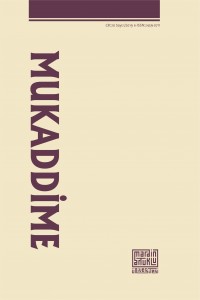Abstract
Recently, scholars of Islamic studies have become increasingly interested in the human body. Yet, the literary appearance of the body in different genres has not been studied in detail yet. The present article aims to demonstrate that the Islamic tradition has employed the human body as a mirror that reflects visually and physically various concepts and aspects of human characteristics. This article scrutinizes various genres and written formats with a specific focus on the body as it appears in legal and literary texts that became best sellers in the Ottoman Empire, including hagiographical works, heroic narratives, physiognomy books, and romances. This includes not only the texts originally produced in Turkish, but also the widely known and read texts translated from Arabic and Persian into Turkish. These texts demonstrate the various ways that the body was used as a platform on which, and through which, certain values could be displayed. As we have seen, while legal texts understand the body as a mirror that reflects one’s piety and/or sinfulness in both this world and hereafter, for literary genres the human body is a mirror through which one’s good or bad personal traits, faith, sanctity, and heroism, as well as depth of love and capacity for sexuality, could also be physically witnessed.
References
- Reference1: Walter G. Andrews, Professor Department of Near Eastern Languages and CivilizationUniversity of WashingtonBox 353120Seattle, WA 98195-3120
- Walter G. Andrews, Professor Department of Near Eastern Languages and CivilizationUniversity of WashingtonBox 353120Seattle, WA 98195-3120
- E-mail: walter@uw.edu
- Reference 2: Kristina L. Richardson, Associate Professor Queens College, City University of New York65-30 Kissena Blvd.Queens, NY 11367-1597
- Kristina L. Richardson, Associate Professor Queens College, City University of New York65-30 Kissena Blvd.Queens, NY 11367-1597
- E-mail: kristina.richardson@qc.cuny.edu
Abstract
Son zamanlarda, İslam çalışan araştırmacılar insan bedeni ile daha fazla ilgilenmeye başladı. Ancak, bedenin farklı türlerdeki edebi yansıması henüz ayrıntılı olarak çalışılmadı. Bu makale, İslami geleneğin insan bedenini görsel ve fiziksel olarak çeşitli insanî özellikleri ve kavramları yansıtan bir ayna olarak nasıl kullandığını göstermeyi amaçlamaktadır. Makale, Osmanlı İmparatorluğu'nda en çok satan dinî ve edebî metinlerde göründüğü haliyle, menâkıbnâmeler, kahramanlık metinleri, kıyafetnâmeler, ve mesnevîler de dahil olmak üzere, bedene özel bir odaklanma ile çeşitli yazın türlerini ve yazılı formları incelemektedir. Bu, yalnızca Türkçe metinleri değil, aynı zamanda Arapça ve Farsça’dan Türkçe’ye çevrilmiş bilinen ve çok okunan metinleri de içerir. Bu metinler, insan bedeninin belirli değerlerin gösterilebileceği bir platform olarak kullanılmasının çeşitli yollarını göstermektedir. Görüldüğü gibi, dinî metinler insan bedenini hem bu dünyada hem ahirette kişinin dindarlığını ve/veya günahkârlığını yansıtan bir ayna olarak algılarken, diğer edebî türler için insan bedeni kişinin iyi ya da kötü kişisel özelliklerinin, inanç, kutsallık, kahramanlık, cinsellik ve aşkın derinliği ve kapasitenin fiziksel olarak gözlemlenebileceği bir aynadır.
References
- Reference1: Walter G. Andrews, Professor Department of Near Eastern Languages and CivilizationUniversity of WashingtonBox 353120Seattle, WA 98195-3120
- Walter G. Andrews, Professor Department of Near Eastern Languages and CivilizationUniversity of WashingtonBox 353120Seattle, WA 98195-3120
- E-mail: walter@uw.edu
- Reference 2: Kristina L. Richardson, Associate Professor Queens College, City University of New York65-30 Kissena Blvd.Queens, NY 11367-1597
- Kristina L. Richardson, Associate Professor Queens College, City University of New York65-30 Kissena Blvd.Queens, NY 11367-1597
- E-mail: kristina.richardson@qc.cuny.edu
Details
| Primary Language | English |
|---|---|
| Subjects | Anthropology |
| Journal Section | Articles |
| Authors | |
| Publication Date | May 30, 2019 |
| Submission Date | February 9, 2019 |
| Published in Issue | Year 2019 Volume: 10 Issue: 1 |
ISSN: 1309-6087, e-ISSN: 2459-0711
Mukaddime is licensed under a Creative Commons Attribution-NonCommercial 4.0 International License (CC BY NC).


